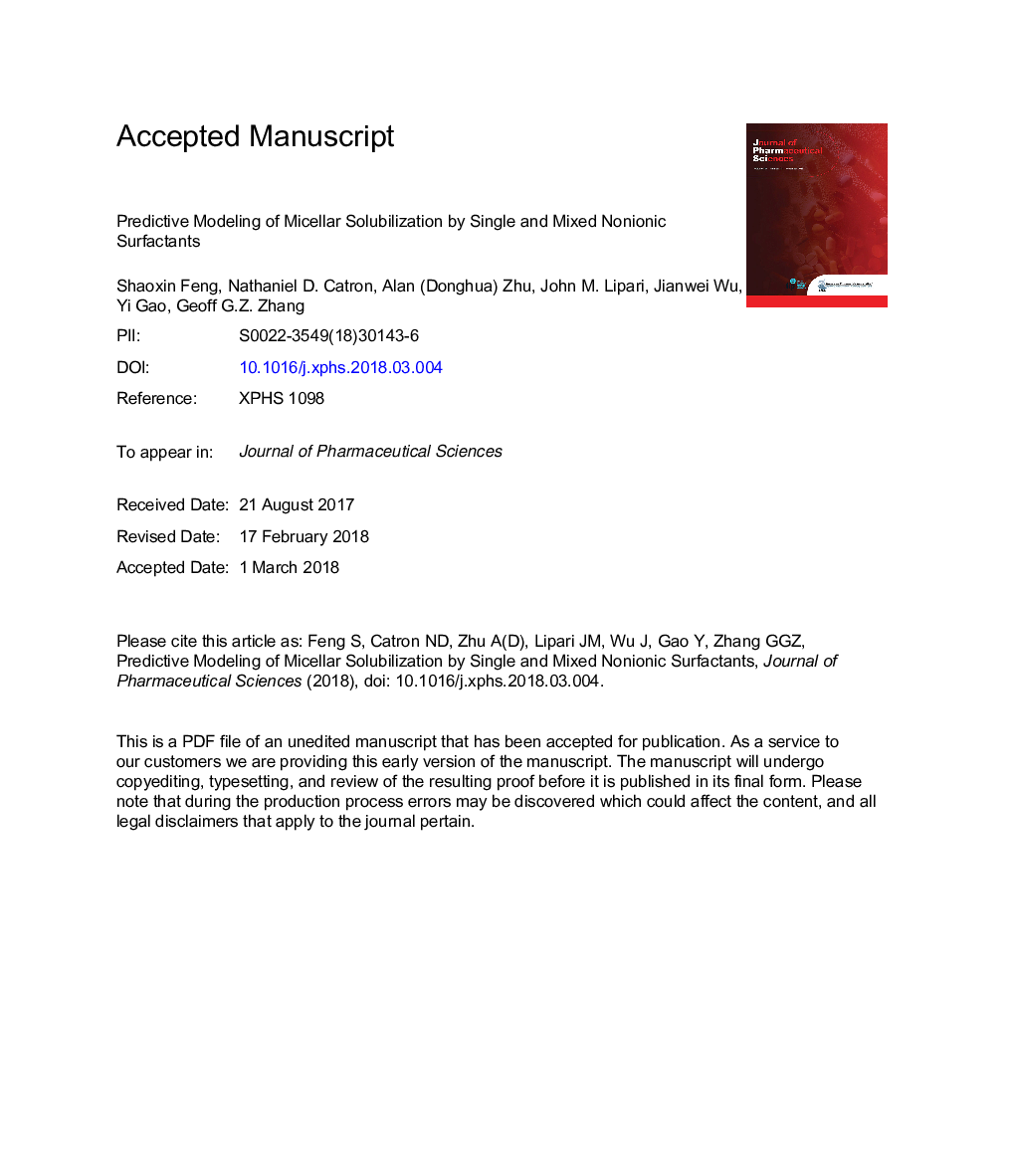| Article ID | Journal | Published Year | Pages | File Type |
|---|---|---|---|---|
| 8513114 | Journal of Pharmaceutical Sciences | 2018 | 40 Pages |
Abstract
Micellar solubilization is an important concept in the delivery of poorly water-soluble drugs. The rational selection of the type and the amount of surfactant to be incorporated in a formulation require comprehensive solubility studies. These studies are time and material demanding, both of which are scarce, especially during late discovery and early development stages. We hypothesized that, if the solubilization mechanism or molecular interaction is similar, the solubilization capacity ratio (a newly defined parameter) is dictated by micellar structures, independent of drugs. We tested this hypothesis by performing solubility studies using 8 commonly used nonionic surfactants and 17 insoluble compounds with diverse characteristics. The results show a striking constant solubilization capacity ratio among the 8 nonionic surfactants, which allow us to develop predictive solubility models for both single and mixed surfactant systems. The vast majority of the predicted solubility values, using our developed models, fall within 2-fold of the experimentally determined values with high correlation coefficients. As expected, systems involving ionic surfactant sodium dodecyl sulfate, used as a negative control, do not follow this trend. Deviations from the model, observed in this study or envisioned, were discussed. In conclusion, we have established predictive models that are capable of predicting solubility in a wide range of nonionic micellar solutions with only 1 experimental measurement. The application of such a model will significantly reduce resource and greatly enhance drug product development efficiency.
Keywords
Related Topics
Health Sciences
Pharmacology, Toxicology and Pharmaceutical Science
Drug Discovery
Authors
Shaoxin Feng, Nathaniel D. Catron, Alan (Donghua) Zhu, John M. Lipari, Jianwei Wu, Yi Gao, Geoff G.Z. Zhang,
